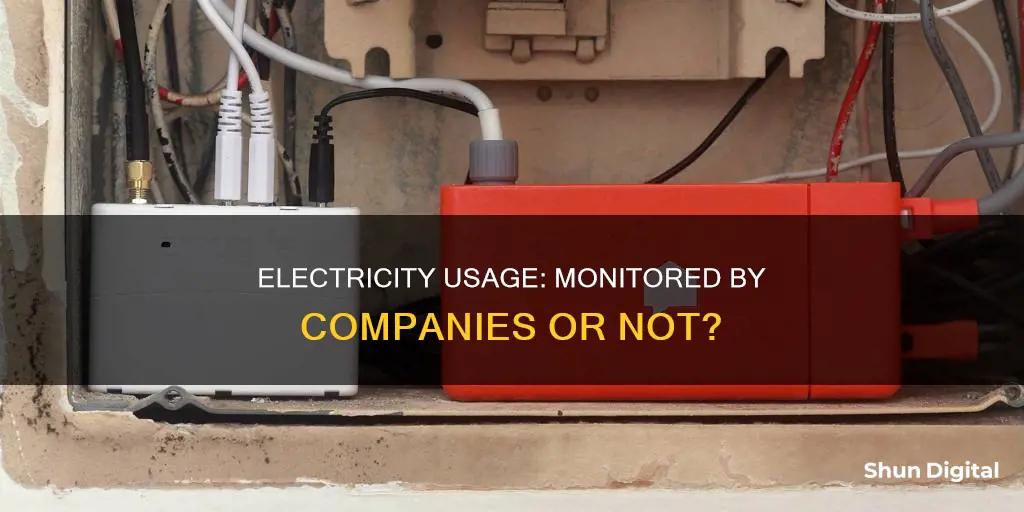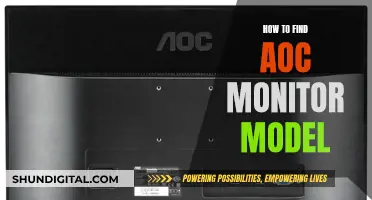
Monitoring your electricity usage is a great way to save money and reduce your carbon footprint. Electricity is expensive, and your bill doesn't always give you a clear picture of how much energy you're using and when. Energy monitors are a great way to get a detailed insight into your energy consumption and make changes to bring those costs down.
There are two main types of energy monitors: whole-house and individual outlet monitors. Whole-house monitors tend to be more expensive, ranging from $100 to $360, and need to be installed by a professional. Individual outlet monitors are cheaper, at around $15 to $55, and simply plug into an outlet.
Both types of monitors can help you identify which devices are using the most energy and when. This allows you to make small changes, such as unplugging devices that aren't in use, or using certain appliances during off-peak hours, which can lead to significant savings on your energy bill over time.
In addition to saving money, monitoring your energy usage can also help you reduce your carbon footprint. By understanding your energy consumption, you can make more informed choices about how you use energy and reduce your impact on the environment.
So, if you're looking to save money and help the planet, investing in an energy monitor might be a great option for you.
| Characteristics | Values |
|---|---|
| Purpose | To help consumers save money and reduce their carbon footprint |
| Mechanism | Devices that provide insights into energy consumption, allowing users to adjust their usage |
| Types | Whole-house and individual outlet monitors |
| Features | Computer compatibility, smartphone app, Wi-Fi capability, a monitoring screen device |
| Cost | Whole-house: $100-$360 plus installation; Individual outlet: $15-$55 |
| Accuracy | Most monitors are accurate enough to help lower energy usage and bills |
What You'll Learn

How to monitor electricity usage
Monitoring your electricity usage can help you identify areas where energy is being wasted and make small changes to reduce your electricity use. Here are some ways to monitor your electricity usage:
Use a Smart Plug
Smart plugs fit between the power socket and an appliance, and they allow you to control and monitor the appliance remotely. They usually connect to Wi-Fi and can be controlled by an app or smart home hub. This means you can remotely control the power going into your appliances and set up automated actions.
Track Your Meter Values Manually
Your electricity meter shows your total consumption in kilowatt-hours (kWh). You can manually track your energy consumption by noting down the meter values at regular intervals, such as once a week. You can do this with pen and paper, by taking a picture of the meter, or by using electricity tracking apps.
Use a Smart Meter
A smart meter is an electronic device that records your household's electricity use and can store and transmit this information digitally, for example, to your utility company. A key benefit of smart meters is that they can provide timely and detailed information on your electricity use through an in-home display, web app, or mobile app.
Use an Electricity Usage Monitor
You can use an electricity usage monitor that plugs into an outlet, and then plug your device or appliance into the monitor. It will display the consumption on an LED screen and can auto-calculate the kWh used by a device over a day, week, month, or year.
Use a Whole-House Electricity Monitoring System
There are several whole-house electricity-monitoring systems available, such as TED Pro, Sense Energy, and Eyedro. These systems use sensors placed on the lines, usually at the household junction box, to gather data, which is then uploaded to the web for you to access. Some of these systems should be installed by an electrician, but others can be installed by the user.
By using these methods, you can gain a detailed understanding of your electricity usage and make informed decisions to reduce your energy consumption and lower your bills.
Monitoring Employee Internet Usage: Company Surveillance Exposed
You may want to see also

The benefits of monitoring electricity usage
Monitoring electricity usage can provide several benefits for homeowners. Here are some advantages:
Identify Areas for Improvement:
By tracking electricity usage, you can analyse which areas of your home are consuming the most energy. This information empowers you to make informed decisions and small changes to reduce overall electricity use. For example, you might discover that certain appliances or devices are using more energy than expected, even when they are turned off but still plugged in, also known as "vampire energy".
Reduce Energy Waste and Costs:
With a detailed understanding of your energy usage, you can take steps to reduce waste. This can lead to lower monthly electricity bills, as you become more conscious of your daily energy consumption. For instance, you might decide to unplug certain devices or upgrade to more energy-efficient appliances. Some sources suggest that using energy monitoring systems can help you save up to 8%-9% on your electric bill.
Environmental Benefits:
Monitoring your electricity usage can also help reduce your carbon footprint. By identifying areas of high energy consumption, you can make more environmentally friendly choices. For instance, you might choose to use certain appliances during off-peak hours or opt for more energy-efficient alternatives, reducing your overall impact on the environment.
Real-Time Data and Convenience:
Many modern energy monitoring systems provide real-time data and notifications directly to your smartphone. This allows you to track your energy usage as it happens and make adjustments as necessary. For example, you can receive alerts when your energy consumption spikes or when certain appliances are left on, giving you greater control over your energy usage.
Understand Your Energy Bill:
Energy monitoring can help you understand the breakdown of your electricity bill. By analysing your usage patterns and costs, you can better predict and manage your energy expenses, making more informed financial decisions.
Monitoring Energy Usage: A Guide to Understanding Your Consumption
You may want to see also

Different types of electricity monitors
There are several types of electricity monitors available to help you keep track of your energy usage and reduce your electricity bill. Here are some of the most common types:
- Smart plugs / Plug-in monitors: These devices are plugged into a power socket, and the appliance is then plugged into the monitor. They are best suited for tracking the energy usage of a few appliances that use a lot of energy rather than everything powered in the home. Smart plugs are easy to use and can be controlled remotely via an app or smart home hub. They also allow for automated actions and provide real-time data on energy consumption and cost.
- Whole-house power monitors: These monitors provide a detailed account of energy use throughout the home. They have sensors that connect to the home's electrical panel or meter and track the performance and power consumption of each appliance based on its connection to an individual circuit. The data is then transmitted to a phone or computer dashboard, providing real-time insights and notifications.
- Wireless energy monitors: These are tablet-like devices that connect and communicate with sensors installed on the designated energy monitor. They provide real-time data on electricity usage and costs, helping users identify when and how they are using power.
- Online energy monitors: Similar to wireless energy monitors, but instead of a separate display tablet, the data is accessed via the internet or a smartphone app.
- Smart meters: Smart meters are electronic devices that record a household's electricity usage and can transmit this information digitally to the utility company. They provide timely and granular information on electricity usage and can be enabled through an in-home display or a web/mobile app.
How Do Apartments Monitor Water Usage by Each Unit?
You may want to see also

How electricity monitors work
Electricity monitors are devices that measure how much energy is being used in a home or building. They are usually handheld or portable and are equipped with a sensor, a transmitter, and a display. The sensor is attached to the main electricity line going into the meter, and the transmitter sends energy usage information back to the monitor. This information is typically displayed in kilowatt hours (kWh), carbon emissions, or cost. While energy monitors do not provide completely accurate readings, they can help users identify appliances that use a lot of electricity and make more informed decisions about their energy usage.
There are two main types of electricity monitors: individual-device monitors and whole-house monitors. Individual-device monitors track the real-time electrical use of a single appliance or electrical device, while whole-house monitors show the total energy usage of a home by connecting to electric meters or boxes. Whole-house monitors sometimes reveal the need for rewiring in older homes.
In addition to these types, there are also plug-in energy monitors that can be used to monitor the energy use of a single appliance. These monitors are more portable and can be easily swapped between appliances to get a better understanding of the energy consumption of each device.
Smart plugs are another way to monitor energy usage. These devices fit between the power socket and an appliance, allowing remote control of the appliance through an app or smart home hub. Smart plugs enable users to control the power going into connected appliances and set up automated actions.
Smart meters are also available and differ from energy monitors in that they transmit data directly to the utility company. They provide more timely and detailed information on energy usage and can help identify appliances that are using more energy.
Monitoring KWH Usage: A Simple Guide to Energy Tracking
You may want to see also

The accuracy of electricity monitors
Electricity monitors are devices that allow you to track your household electricity usage. They can help you identify areas where energy is being wasted and make small changes to reduce your electricity use, resulting in lower monthly bills and a lower carbon footprint.
There are several ways to monitor your electricity usage, including smart plugs, manual meter tracking, smart meters, and whole-home energy monitors. While these tools can provide valuable insights, it's important to understand their accuracy and potential limitations.
Smart plugs are devices that fit between the power socket and an appliance, allowing remote control and more efficient energy usage. They connect to Wi-Fi and can be controlled through apps or smart home hubs. While they provide a convenient way to monitor individual devices, their accuracy may vary depending on the brand and model.
Manual meter tracking involves recording the values from your electricity meter at regular intervals. This method provides basic information about your total electricity consumption but may not offer the same level of detail as digital solutions.
Smart meters are electronic devices that record and transmit electricity usage data. They provide more timely and detailed information than conventional meters, often through in-home displays or mobile apps. Smart meters are generally considered accurate, with only about 1% installed incorrectly.
Whole-home energy monitors, such as the Emporia – Vue, provide circuit-level monitoring by installing sensors on individual breaker wires. They offer a comprehensive view of your energy usage but may require a qualified person for installation.
According to reviews and tests by YourBestDigs, the accuracy of electricity monitors can vary. They tested several devices, including the BN-Link – BNC-60 smart plug, the Fayleeko stand-alone plug-in monitor, and the Emporia – Vue whole-home monitor. The BN-Link smart plug was found to be accurate in tracking voltage and current, while the Fayleeko monitor provided accurate readings for current, voltage, power factor, and other parameters. The Emporia – Vue whole-home monitor also provided accurate readings, though it may take some time to detect specific appliances.
In summary, electricity monitors can provide valuable insights into your energy usage and help you make informed decisions to reduce waste. While smart plugs, smart meters, and whole-home monitors all have their advantages, their accuracy may vary depending on the specific device and installation. It is always recommended to refer to the product specifications and reviews to ensure you are choosing a reliable and accurate electricity monitor.
Monitoring Electricity Usage: A Guide to Tracking Your Power Consumption
You may want to see also







